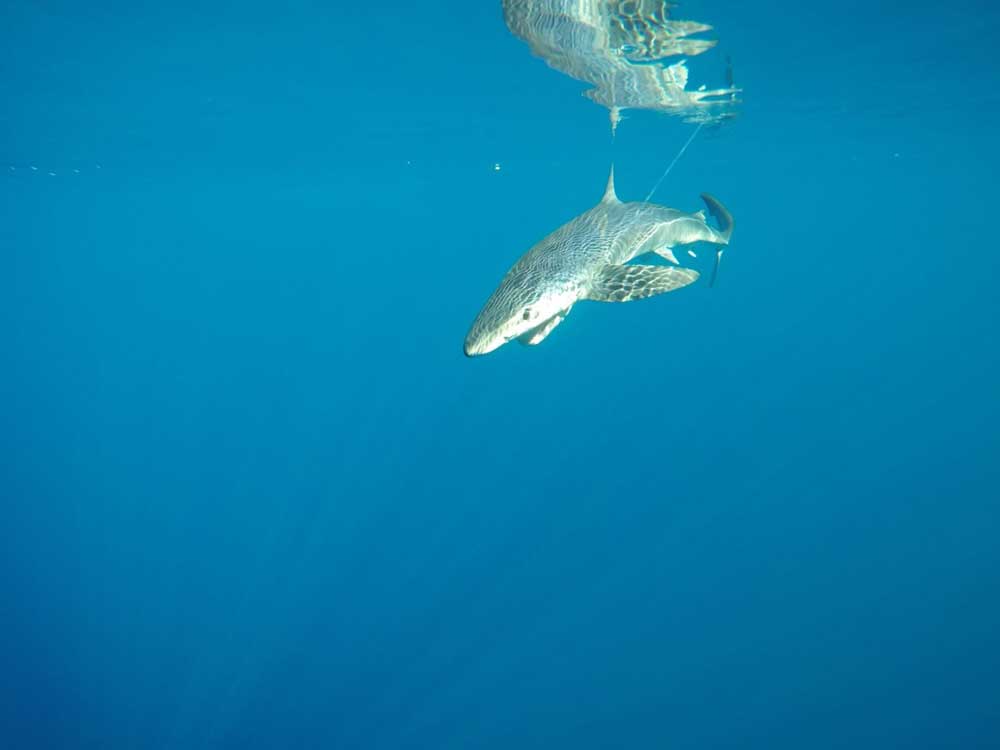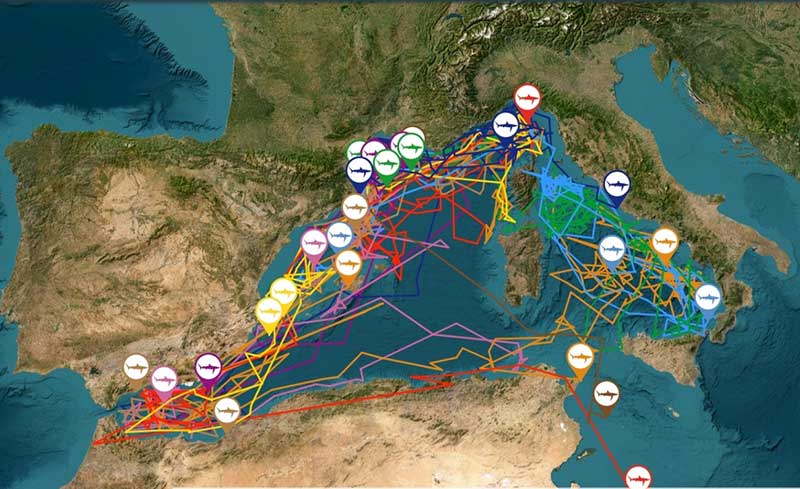← Back
Blue sharks in the Western Mediterranean Sea

Blue sharks are threatened – as most shark species. However, basic information on the species in the Mediterranean are missing – population, habitat, migration… — while this sea is specific, and its blue shark populations’ behaviour can’t be deduced by the others’. Argos can help in improving this knowledge.
The blue shark (Prionace glauca) is a highly migratory and wide-ranging shark. It is found in all tropical and temperate seas, including the Mediterranean Sea. The species is one of the most heavily fished shark species in the world (see also Less oxygen in the ocean may mean more threats from fisheries for blue sharks about blue sharks in the Atlantic Ocean).
But basic information on the species in the Mediterranean are missing – population, habitat, migration… In the meantime, the characteristics of this Sea makes it unique. Thus, blue shark spatial distribution of life stages can’t be deduced from other oceanic basins’ populations.
More info about animal tracking with Argos
Tracking blue sharks in the Mediterranean Sea
To answer these questions, thirty-nine blue sharks were equipped with satellite tags from July 2012 to May 2017 in three different areas of the Western Mediterranean and at different periods so as not to bias the sampling.
This project has been carried out in close collaboration with the fishing sector in France and in Spain.

Sharks tracked over long periods swam deliberately in coastal waters, used the main currents for large movements, and stayed temporarily in some definite regions (Western Alboran Gyre, Eastern Alboran Gyre, Gulf of Lions).
None of them moved to the North Atlantic nor to the Eastern basin, thus showing absences of connectivity between those and the Western Mediterranean basin. In the meantime, the long-tracked blue sharked used a number of the seven defined regions of the Western basin (Ligurian Sea, Gulf of Lions, Balearic Sea, Alboran Sea), Algerian basin, Tyrrhenian Sea, and Convection region), thus showing a high connectivity within this basin.
Those regions seem to play different roles in the blue shark life cycle, depending on their size/age and sex. For example, the Gulf of Lions seem to be the mating, parturition and nursery grounds, the northern Alboran Sea and the Tyrrhenian Sea overwintering areas for large juvenile females.
Further studies to better understand blue sharks’ behavior in the Western Mediterranean Sea
The fact that none of the tracked individuals went to the Eastern Mediterranean basin nor to the North Atlantic suggests that they have distinct stocks. More tracking would be needed to be sure of this. Tagging more adults and males would be needed to develop a sex- and size-specific migration model.
Previous studies pinpointed the youth of the blue sharks as their most vulnerable stage. Protecting them at this period, and thus protecting the nursery habitat could be a way of effectively protecting the species. As these are within the French exclusive economic zone, the regulations are up to France. Regulating fisheries is another possible approach.
Reference & links
- F. Poisson, H. Demarcq, S. Coudray, J. Bohn, J.A. Camiñas, J.M. Groul, D. March, 2024: Movement pathways and habitat use of blue sharks (Prionace glauca) in the Western Mediterranean Sea: Distribution in relation to environmental factors, reproductive biology, and conservation issues, Fisheries Research, Volume 270 (2024) 106900, https://doi.org/10.1016/j.fishres.2023.106900
- http://www.stellaris-asso. org/tracking_page/


